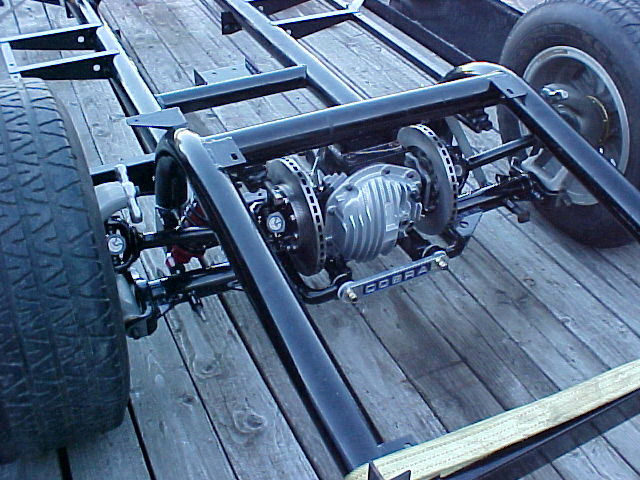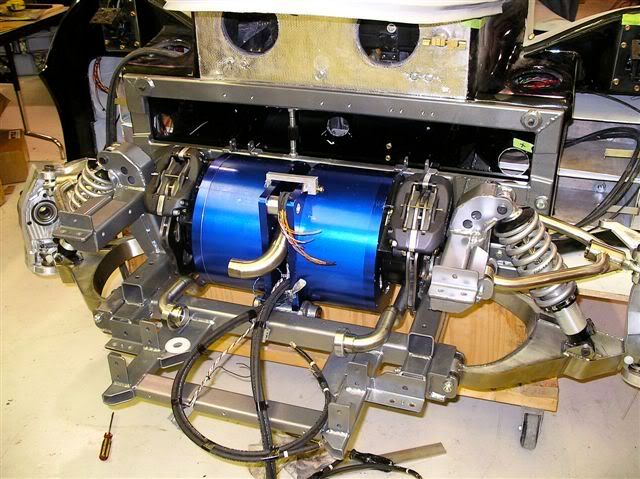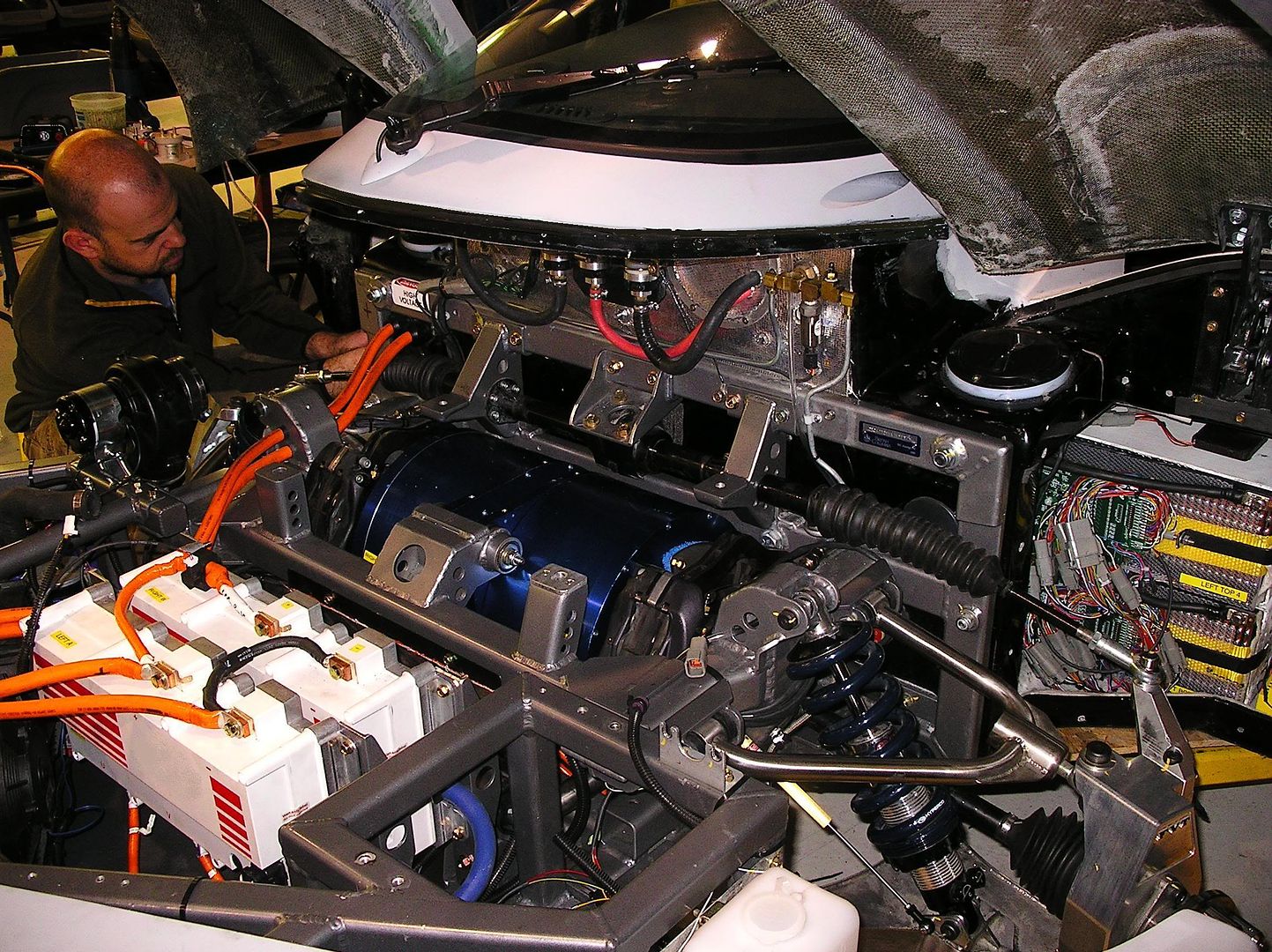 01-27-2014, 06:00 PM
01-27-2014, 06:00 PM
|
#11 (permalink)
|
|
Master EcoModder
Join Date: Oct 2012
Location: USA
Posts: 1,408
Thanks: 102
Thanked 252 Times in 204 Posts
|
IIRC the cobras moved the brake disks inboard on the independent rear suspension to reduce unsprung weight further.
I always liked the Dave Cloud dolphin setup. Motor shafts in line with the rear swingarm pivot, one motor on each rear wheel, simple chain and sprocket, minimal unsprung weight and cost and complications. Little jacking but no biggie.
I suppose a combination sprocket/brake disk would be asking for trouble 

|
|
|

|
|
The Following User Says Thank You to P-hack For This Useful Post:
|
|
 Today Today
|
|
|
|
 Other popular topics in this forum...
Other popular topics in this forum...
|
|
|
|
 01-27-2014, 08:02 PM
01-27-2014, 08:02 PM
|
#12 (permalink)
|
|
Master EcoModder
Join Date: May 2008
Location: Maynard, MA Eaarth
Posts: 7,907
Thanks: 3,475
Thanked 2,950 Times in 1,844 Posts
|
Yes, the FVT eVaro had direct drive with back-to-back electric motors and inboard disk brakes.
 
The tradeoffs are more space taken up by the motors and a bit more complexity. You still need the software to do the differential function. But much less unsprung weight, and more centralized mass. |
|
|

|
|
The Following User Says Thank You to NeilBlanchard For This Useful Post:
|
|
 01-28-2014, 09:17 AM
01-28-2014, 09:17 AM
|
#13 (permalink)
|
|
Master EcoModder
Join Date: Oct 2012
Location: USA
Posts: 1,408
Thanks: 102
Thanked 252 Times in 204 Posts
|
software diff isn't much of a concern IMHO, it is a plus actually if you want better slip control (as compared to "posi" or "lockers" or "open only"). I would take a solid state differential over a mechanical one in an EV.
The space isn't a big concern either (as compared to an engine and trans), though I do wonder what if any advantage using smaller high speed geared(sprocketed) inboard motors in something like the FVT setup would be. The FVT, or the dolphin (which is basically a motorcycle setup) seem like the best unsprung options though, no matter how small the motor/rotor are.
What are the compromises in a smaller high speed motor vs something like the FVT?
Edit, aside from the obvious, since the FVT sized motors don't have gearing/sprockets, that is less moving parts to wear and one less efficiency drop. Though the possibility of adding additional gears is reduced too.
Last edited by P-hack; 01-28-2014 at 09:22 AM..
|
|
|

|
 01-29-2014, 12:01 AM
01-29-2014, 12:01 AM
|
#14 (permalink)
|
|
Master EcoModder
Join Date: May 2012
Location: USA
Posts: 2,643
Thanks: 1,502
Thanked 279 Times in 229 Posts
|
Yeah buddy, nothing like a Dave Cloud dolphin setup. 
Software differential?!?!?! What happened to just wiring one of the motors in reverse polarity and both in parallel? One wheel peel?  |
|
|

|
 01-29-2014, 11:14 AM
01-29-2014, 11:14 AM
|
#15 (permalink)
|
|
Master EcoModder
Join Date: Jul 2008
Location: Langley, BC
Posts: 1,228
Fusion - '16 Ford Fusion Hybrid SE
Thanks: 190
Thanked 275 Times in 168 Posts
|
Quote:
Originally Posted by Cobb

What happened to just wiring one of the motors in reverse polarity and both in parallel? One wheel peel?  |
Wiring series wound DC motors in parallel will already be a differential of sorts. For example, with both wheels spinning off the ground, if you stop one, the other will speed up, exactly the same as a mechanical diff. The reason I know this is I made a Lego version of this once. 
However, these motors in question are AC or BLDC, which require individual controllers per motor. They would be just fine without computer intervention for every day driving, as there is no direct mechanical link between each side. It's the situations that would normally require a limited slip/torsen differential that would would require computer intervention to direct power where needed. |
|
|

|
|
The Following User Says Thank You to mechman600 For This Useful Post:
|
|
 01-29-2014, 11:28 AM
01-29-2014, 11:28 AM
|
#16 (permalink)
|
|
Master EcoModder
Join Date: May 2012
Location: USA
Posts: 2,643
Thanks: 1,502
Thanked 279 Times in 229 Posts
|
My first response was to say you could use the turn signals to signal the opposite side motor controller to work only, but not many use turn signals. 
I built a simple electric scooter once with the 2 rear motors in parallel with a golf cart speed controller for that situation. This way it could make tight turns. The inner motor/wheel could break loose and make it start to drift i you hammered it.  |
|
|

|
 01-29-2014, 11:52 AM
01-29-2014, 11:52 AM
|
#17 (permalink)
|
|
Master EcoModder
Join Date: Oct 2012
Location: USA
Posts: 1,408
Thanks: 102
Thanked 252 Times in 204 Posts
|
I imagine that there would be one controller that manages both motors, possibly a steering angle input as well if you want max efficiency in the corners and curves, though I don't know how you manage traversing a slope (or a crowned road) most efficiently (without the motors fighting each other), off the top of my head. Accelerometers might be better, but they have drift issues, not the fun kind. It may be possible to do it all simply by monitoring the torque(amps) and speed of each motor, but haven't thought it through.
Last edited by P-hack; 01-29-2014 at 11:57 AM..
|
|
|

|
|